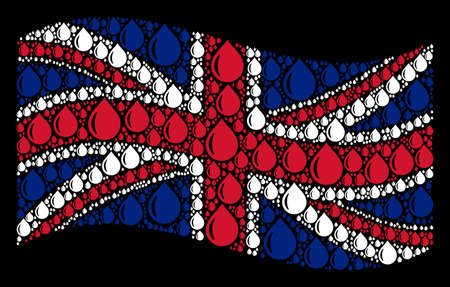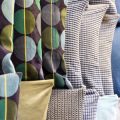Introduction to British Textile Traditions
Britain’s textile legacy is deeply woven into the fabric of its cultural and social history, serving as both a creative expression and an essential industry for centuries. From the rolling hills of Yorkshire, famed for their woollen mills, to the historic silk weaving workshops of Spitalfields, each region of the UK has contributed unique techniques and styles that have shaped not only local communities but also global trends in soft furnishings. The distinct patterns, textures, and craftsmanship found in British textiles are more than mere decoration; they tell stories of innovation, artistry, and resilience. As we explore the evolution of British textiles, it becomes clear how these traditions continue to inspire contemporary interior design, infusing modern homes with a sense of heritage and understated elegance that is unmistakably British.
2. Regional Textiles: Wool from Yorkshire to Scottish Tweed
The story of British soft furnishings is deeply rooted in the distinctive textile heritage of its regions. Across the rolling hills and historic mills, iconic fabrics have emerged—each carrying a unique identity, history, and craftsmanship that continue to define interiors across the UK and beyond.
A Journey Through Britain’s Textile Heartlands
From the verdant valleys of Yorkshire to the windswept Highlands of Scotland, regional textiles are celebrated for their exceptional quality and enduring style. Yorkshire, long regarded as the heart of wool production, gained renown during the Industrial Revolution. Its mills produced robust worsteds and fine merino blends, essential for upholstery and luxurious drapery. Meanwhile, Lancashire’s vibrant cotton industry transformed printed textiles for curtains and cushions, adding a touch of English whimsy to homes.
Signature Fabrics by Region
| Region | Iconic Fabric | Key Characteristics | Influence on Soft Furnishings |
|---|---|---|---|
| Yorkshire | Wool (Worsted & Merino) | Durable, warm, versatile textures | Upholstery, heavy drapes, classic armchairs |
| Lancashire | Cotton Prints | Lightweight, colourful patterns | Curtains, cushion covers, slipcovers |
| Scotland (Highlands & Borders) | Tweed & Tartan | Earthy tones, heritage motifs, hardwearing weave | Sofas, throws, accent pillows |
| Northern Ireland | Linen Damask | Crisp texture, subtle sheen | Table linens, blinds, bedding accents |
The Enduring Influence on Modern Interiors
The legacy of these regions continues to inspire contemporary British interior design. Today’s soft furnishings often blend heritage fabrics with modern aesthetics—think a Yorkshire wool throw draped over a minimalist sofa or Scottish tweed cushions paired with sleek mid-century chairs. Such combinations create spaces that feel both timelessly British and refreshingly current. By embracing regional textiles in soft furnishings, designers and homeowners alike pay homage to the artistry woven into the very fabric of British life.

3. Patterns, Prints, and Motifs: From Florals to Heritage Checks
The story of British textiles in soft furnishings is richly interwoven with patterns and motifs that speak volumes about the nation’s history, culture, and creative flair. From stately homes in the countryside to chic London flats, these designs have become synonymous with British style, encapsulating both tradition and innovation. At the heart of this visual language are florals—think sprawling chintz roses and delicate wildflowers—echoing Britain’s enduring love affair with its gardens and natural landscapes.
The Enduring Charm of Florals
Floral prints have long been a cornerstone of British interiors, embodying a sense of romance and connection to nature. Inspired by the lush English countryside, these patterns can be found gracing everything from plush curtains to scatter cushions. Designers like William Morris elevated botanical motifs into works of art during the Arts and Crafts movement, championing craftsmanship and attention to detail that still influence soft furnishing trends today.
Heritage Checks and Tartans
Checks, plaids, and tartans hold a special place in the tapestry of British textile heritage. These classic patterns evoke images of Highland estates, cosy drawing rooms, and timeless sophistication. Originally associated with specific Scottish clans, tartans have transcended their origins to become beloved throughout the UK, lending warmth and character to throws, upholstery, and decorative accents.
Quintessentially British Motifs
Beyond florals and checks, British soft furnishings often incorporate other uniquely national motifs—such as regal damasks reminiscent of royal residences or whimsical prints featuring teacups and country wildlife. Each motif is more than mere decoration; it acts as a cultural signifier, celebrating British identity while adding layers of narrative depth to every interior space. Whether it’s a nod to heritage or a bold modern reinterpretation, these patterns continue to shape the evolving landscape of British design.
4. Innovation and Influence: The Role of the British Industrial Revolution
The British Industrial Revolution marked a pivotal chapter in the evolution of textiles, profoundly transforming both production methods and the cultural landscape of soft furnishings. Before this era, textiles were painstakingly crafted by hand, making items such as curtains, upholstery, and decorative cushions rare and costly. With the advent of industrial advancements—such as the spinning jenny, power loom, and mechanised dyeing—textile production underwent a dramatic shift from artisanal to mass-produced.
This surge in efficiency not only lowered costs but also democratised access to beautifully made soft furnishings across Britain’s homes. Middle-class households could now enjoy patterned drapes and plush sofas once reserved for the elite. The versatility of materials expanded too, as new blends like cotton-linen and synthetic fibres became available, each offering unique textures suitable for varied interior styles.
Key Innovations and Their Impact
| Innovation | Year Introduced | Impact on Soft Furnishings |
|---|---|---|
| Spinning Jenny | 1764 | Enabled mass yarn production, lowering fabric costs and increasing availability. |
| Power Loom | 1785 | Mechanised weaving processes, allowing intricate patterns in curtains and upholstery fabrics. |
| Chemical Dyes | 1856 | Expanded colour palettes for home textiles, fostering trends in seasonal décor. |
| Synthetic Fibres | Early 20th Century | Brought durability and easy-care finishes to everyday soft furnishings. |
The Ripple Effect on British Interiors
This industrial ingenuity did more than alter manufacturing—it encouraged creative expression within British interiors. Homeowners experimented with layering textiles, mixing prints, and embracing comfort as an essential element of domestic life. The accessibility of diverse fabrics allowed for personalisation, making every home a canvas for characterful design rooted in heritage but ever-evolving through innovation.
5. The Enduring Allure of British Craftsmanship
The artistry and meticulous attention to detail that define British-made soft furnishings are central to their enduring appeal. From the earliest days of hand-stitched tapestries in stately homes to today’s innovative, contemporary textiles crafted by skilled artisans, there is a palpable sense of pride woven into every thread.
Hand-Stitched Heritage
Traditional techniques such as embroidery, appliqué, and hand-quilting remain at the heart of British textile production. These methods, passed down through generations, ensure that each cushion, curtain, or throw carries a unique character and story. When you run your fingers over a hand-finished seam or admire the subtle intricacies of a bespoke trim, you are experiencing the legacy of centuries-old craftsmanship.
Contemporary Artisans
Modern British makers continue to reinterpret this rich heritage with fresh creativity. Across the country, small studios and independent designers draw on classic motifs—think William Morris-inspired patterns or tartan checks—while experimenting with sustainable materials and bold colour palettes. Their work honours tradition yet speaks to a new era of eco-conscious, design-led living.
An Appreciation for Detail
Whether it’s the perfectly matched pattern repeat on a set of drapes or the delicate piping along a velvet cushion, British soft furnishings are celebrated for their refined finish. This dedication to quality transforms interiors into inviting sanctuaries, each piece reflecting the maker’s passion and expertise. Ultimately, choosing British textiles for your home is more than an aesthetic decision—it’s an investment in authenticity, artistry, and enduring style.
6. British Textiles in Modern Interior Design
Classic British textiles have a unique ability to bridge the gap between tradition and modernity, making them a beloved choice in today’s interior design landscape. From the timeless appeal of Harris Tweed to the refined elegance of Liberty prints, these textiles are continually reimagined to suit contemporary tastes while honouring their storied heritage. Designers across the UK and beyond are embracing iconic patterns such as tartans, florals, and paisleys, integrating them into sleek, minimalist interiors or layering them with bold colours for an eclectic look.
In modern living spaces, British textiles serve as both statement pieces and subtle accents. A velvet Chesterfield sofa upholstered in a classic wool check brings warmth and character to a loft apartment, while linen drapes featuring William Morris motifs infuse a sense of artistry into light-filled rooms. These fabrics complement the architectural features of period homes just as effortlessly as they elevate new builds, demonstrating their versatility and enduring charm.
Innovation is at the heart of this evolution. Contemporary makers are experimenting with sustainable fibres, digital printing techniques, and unexpected colour palettes to push the boundaries of traditional British fabrics. Yet, whether used in soft furnishings like cushions, throws, or bespoke headboards, the essence of British textile heritage remains unmistakable—rooted in craftsmanship, narrative, and a deep appreciation for quality.
The result is a harmonious balance: interiors that feel fresh and forward-looking without losing sight of their cultural roots. By weaving classic British textiles into modern design schemes, homeowners and designers alike celebrate a legacy that continues to inspire and elevate our everyday environments.


